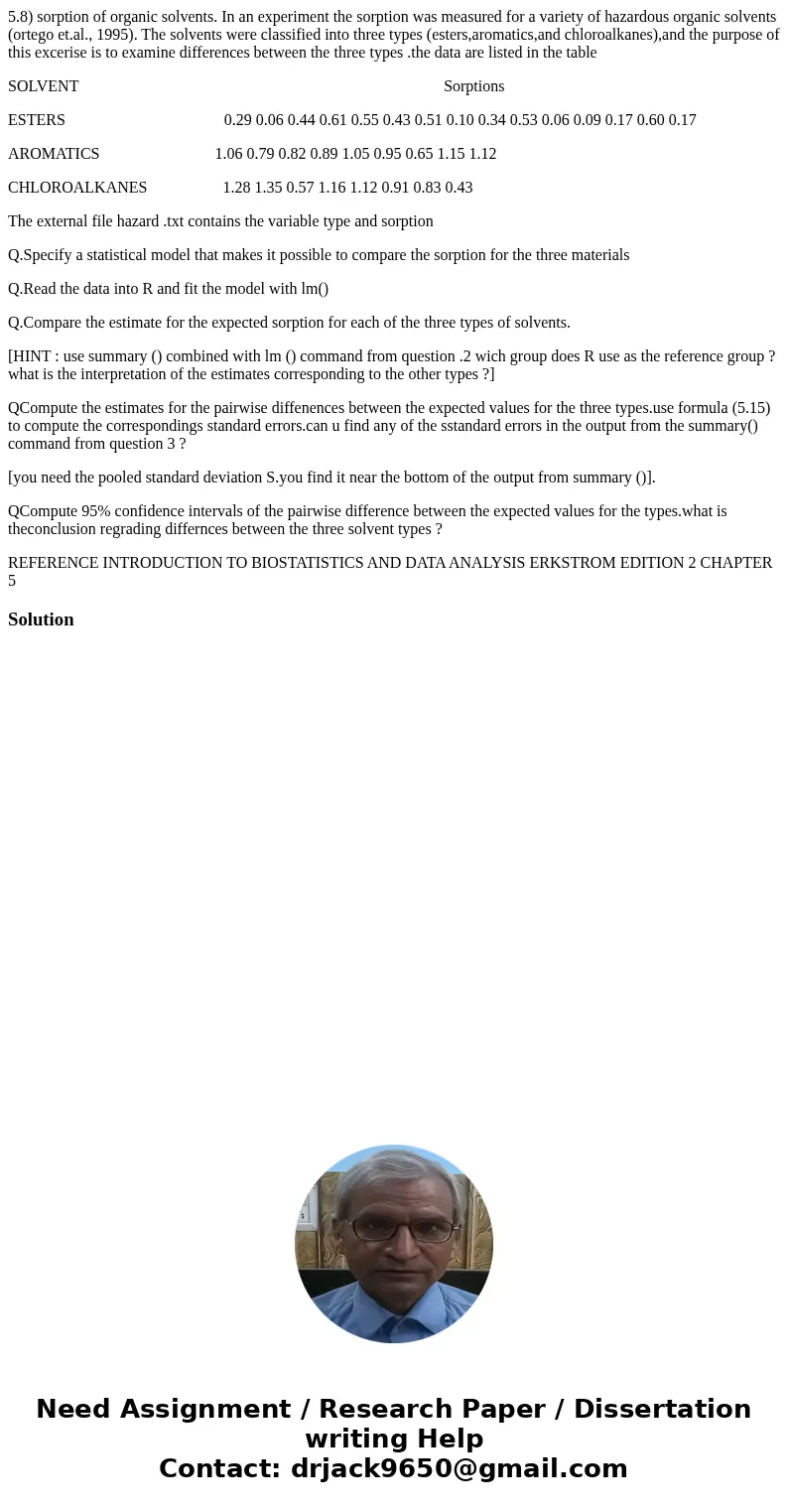58 sorption of organic solvents In an experiment the sorptio
5.8) sorption of organic solvents. In an experiment the sorption was measured for a variety of hazardous organic solvents (ortego et.al., 1995). The solvents were classified into three types (esters,aromatics,and chloroalkanes),and the purpose of this excerise is to examine differences between the three types .the data are listed in the table
SOLVENT Sorptions
ESTERS 0.29 0.06 0.44 0.61 0.55 0.43 0.51 0.10 0.34 0.53 0.06 0.09 0.17 0.60 0.17
AROMATICS 1.06 0.79 0.82 0.89 1.05 0.95 0.65 1.15 1.12
CHLOROALKANES 1.28 1.35 0.57 1.16 1.12 0.91 0.83 0.43
The external file hazard .txt contains the variable type and sorption
Q.Specify a statistical model that makes it possible to compare the sorption for the three materials
Q.Read the data into R and fit the model with lm()
Q.Compare the estimate for the expected sorption for each of the three types of solvents.
[HINT : use summary () combined with lm () command from question .2 wich group does R use as the reference group ? what is the interpretation of the estimates corresponding to the other types ?]
QCompute the estimates for the pairwise diffenences between the expected values for the three types.use formula (5.15) to compute the correspondings standard errors.can u find any of the sstandard errors in the output from the summary() command from question 3 ?
[you need the pooled standard deviation S.you find it near the bottom of the output from summary ()].
QCompute 95% confidence intervals of the pairwise difference between the expected values for the types.what is theconclusion regrading differnces between the three solvent types ?
REFERENCE INTRODUCTION TO BIOSTATISTICS AND DATA ANALYSIS ERKSTROM EDITION 2 CHAPTER 5
Solution

 Homework Sourse
Homework Sourse